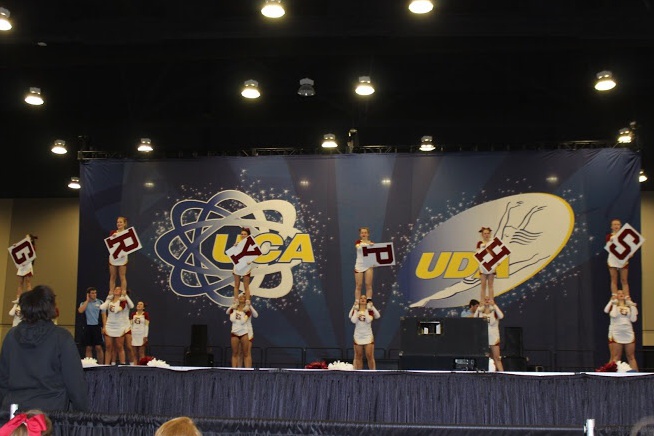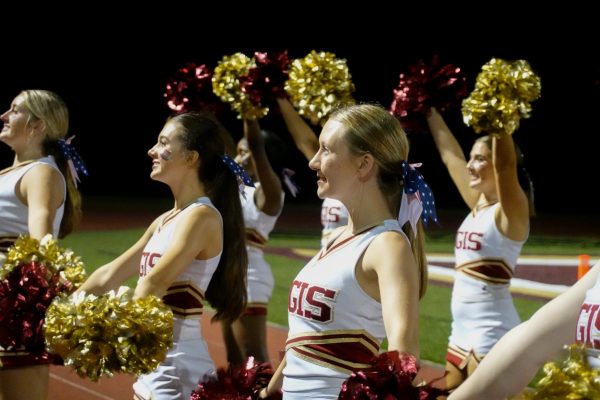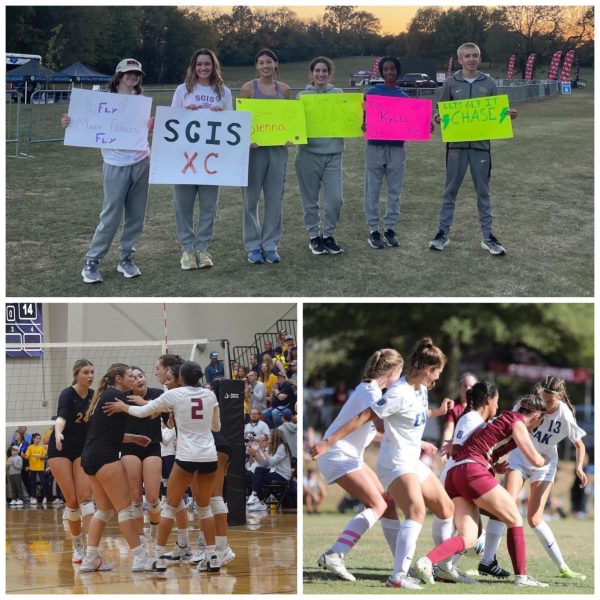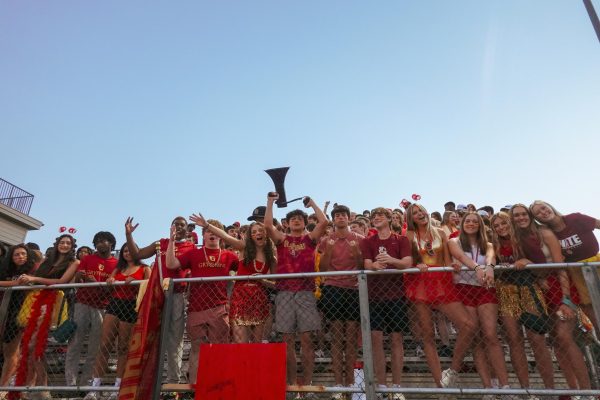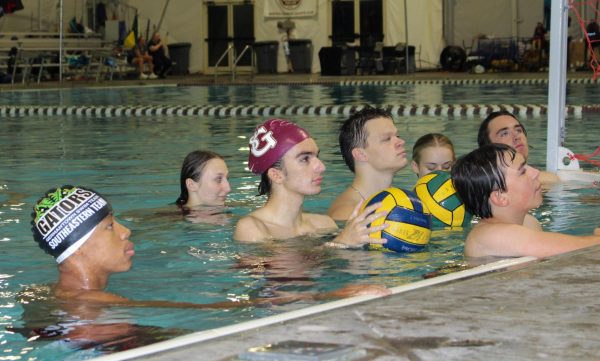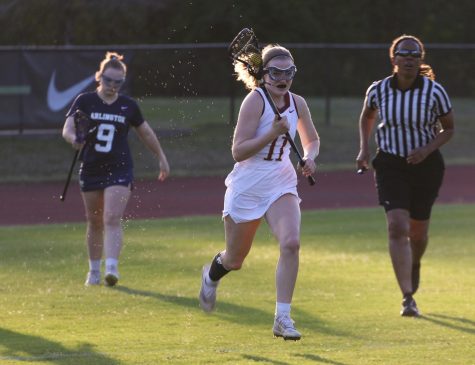Competitive cheerleading is a sport
Photo: Lane Franklin
The competitive cheer team performs their routine at regionals. The squad performed at Nationals on Saturday, Feb. 6.
“Cheer is very different from other sports, and therefore, it is hard to define it as a sport,” junior Mark Clark said, expressing a common stereotype that surrounds cheerleading. For most people, the only time they see a cheerleader is on the sideline of football games, yet the tireless efforts of a cheerleader do not end on the field.
Competitive cheer takes the sport to a new level with tumbling, stunting and dancing through a long routine. The sport of competitive cheerleading is one that is often demeaned, resulting in disrespect towards us athletes who work just as hard as those in other sports.
Individuals who lack knowledge about competitive cheer often view cheerleading as something designed solely to entertain a crowd. Competitive cheerleaders constantly battle the stigma that their purpose is purely entertainment, rather than athleticism.
Cheerleading, like all sports, is time-demanding, as our squad begins with spring practices, and the practices intensify from August until February. Our team splits its focus between sideline cheer for the football team and competition routines. In the heart of competition season, which are the four months leading up to February’s national competition, practices can be up to three hours long, six days a week.
Outside of team practices, cheerleaders are expected to work on improving their tumbling and stunting skills. The individual conditioning and training cheerleaders do in addition to practices and games are quite similar to the requirements for other competitive sports, such as football, swimming and volleyball. The seven-month season, plus the off-season practices, conditioning and training, make competitive cheer a year-round sport.
Like most other sports, teamwork is arguably the most important component of cheerleading, and practices are mandatory. If a squad member is running a fever or is under a lot of stress, she is still required to show up to practice.
In cheerleading, every girl not only has her own individual role, but she also has to work with others to practice difficult stunts for a routine. If a girl becomes injured, it is not only difficult for her, but it is difficult for her team. When an injury occurs, an entire routine often has to be reworked around the missing person, since every person is necessary in order to practice the complete routine.
Due to the training, conditioning, unnatural flipping and stretching, cheerleading is one of the most physically demanding sports. Statistically speaking, cheerleading puts participants at a greater risk of injury than any other women’s sport.
The National Center for Catastrophic Injury Research found that cheerleading had more catastrophic injuries than all other sports in which women participate. Cheerleading also ranks second in catastrophic injuries when compared to both men and women’s sports, and that 65 percent of all catastrophic injuries in youth sports occur in cheerleading.
The St. George’s competitive cheerleading team competes three different times each season, which are at regionals, state and nationals. The national competition is held in Orlando, Fla., every February, and hundreds of squads from all over the country come together to compete. There are multiple rounds where each team has two minutes and 30 seconds to perform a routine, consisting of elite stunts and tumbling skills to prove that their squad is the best. The Gryphon cheerleaders represented St. George’s at the nationally-televised competition finals on Feb. 6, 2016.
Cheerleading is a sport that is frequently doubted and degraded, but with time and an increase in awareness, competitive cheerleading will receive the respect it deserves as the difficult, demanding sport it is.


